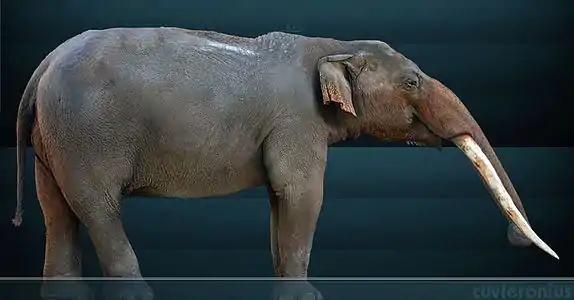Lycopsis
Lycopsis is an extinct genus of South American metatherian, that lived during the Miocene in Argentina and Colombia.[1]
| Lycopsis | |
|---|---|
 | |
| Fossil of L. longirostrus | |
| Scientific classification | |
| Kingdom: | |
| Phylum: | |
| Class: | |
| Order: | |
| Superfamily: | †Borhyaenoidea |
| Genus: | †Lycopsis Cabrera 1927 |
| Species | |
| |
| Synonyms | |
| |
Taxonomy

Skull of Lycopsis
The cladogram after the analysis of Suárez et al., 2015, looks as follows:[2]
| Sparassodonta |
| ||||||||||||||||||||||||||||||||||||||||||||||||||||||||||||||||||||||||||||||||||||||||||||||||||||||||||||||||||||||||||||||
Distribution
Fossils of Lycopsis have been found in:[3]
- Arroyo Chasicó Formation and Santa Cruz Formations, Argentina
- Honda Group, Colombia
References
- Argot, C. (2004). "Functional-adaptive analysis of the postcranial skeleton of a Laventan borhyaenoid, Lycopsis longirostris (Marsupialia, Mammalia)". Journal of Vertebrate Paleontology. 24 (3): 689. doi:10.1671/0272-4634(2004)024[0689:FAOTPS]2.0.CO;2.
- Suárez, C.; Forasiepi, A. M.; Goin, F. J.; Jaramillo, C. (2015). "Insights into the Neotropics prior to the Great American Biotic Interchange: new evidence of mammalian predators from the Miocene of Northern Colombia". Journal of Vertebrate Paleontology. Online edition: e1029581. doi:10.1080/02724634.2015.1029581.
- Lycopsis at Fossilworks.org
This article is issued from Wikipedia. The text is licensed under Creative Commons - Attribution - Sharealike. Additional terms may apply for the media files.






.jpg.webp)
